A Note From From The Editor:
Welcome to the new series “Watches & Photography.” In this series, curated and written by our friend and contributor Michael Maximilien, we explore the intersection of watches and photography. We delve into a photographer’s passion for watches and how it is reflected through their photographic work with watches as the subject and photography, naturally, as the medium to share one’s enthusiasm for these two tools.
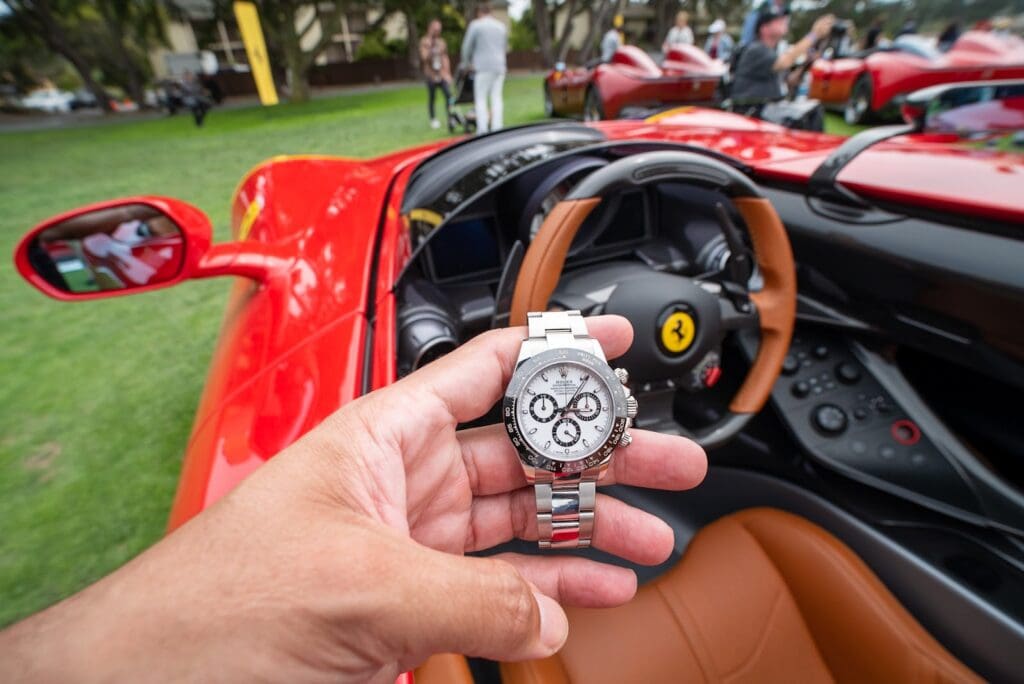
The Rolex Daytona reference 116500LN with white dial (or “panda” dial) is the most desirable Rolex watch ever created. And it’s likely the most desirable watch in the world today. This “panda” model with a black ceramic bezel was introduced in 2016, and it is sought after by collectors and enthusiasts alike. Waiting lists at authorized dealers are measured in years and on the secondary market, a good condition used exemplar fetches 2 times to 3 times the retail price. And that was before the “watch craze” of the pandemic years. What makes this Daytona so desirable? And more importantly, is it worth the hype?
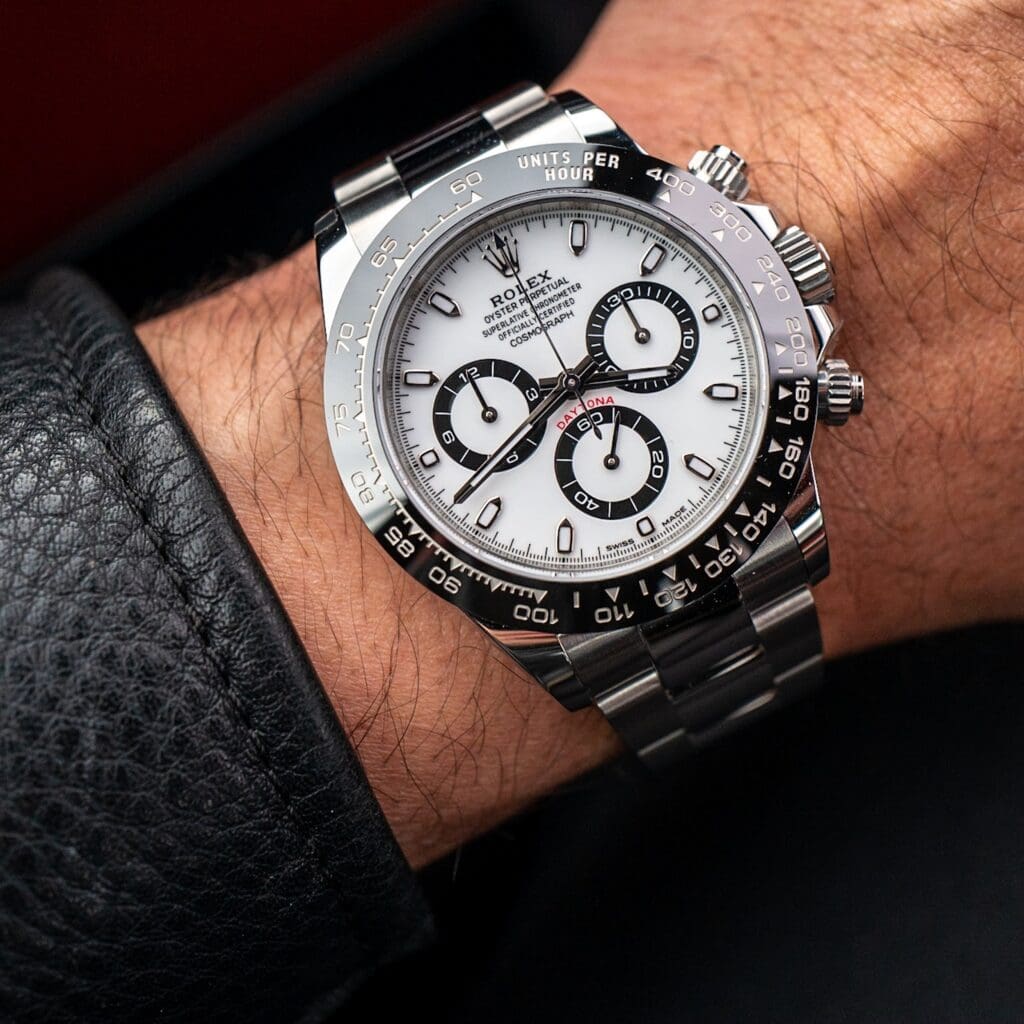
The Rolex Daytona was first released more than 60 years ago (1963) as a chronograph watch designed for motorsports enthusiasts and professionals. Indeed, with the tachymeter on the bezel, one can easily measure the average speed of a car on the track by starting and stopping the chronograph when the car passes two milestones with lengths of one kilometer or one mile. The average speed can be read off the bezel by the chronograph’s seconds hand.
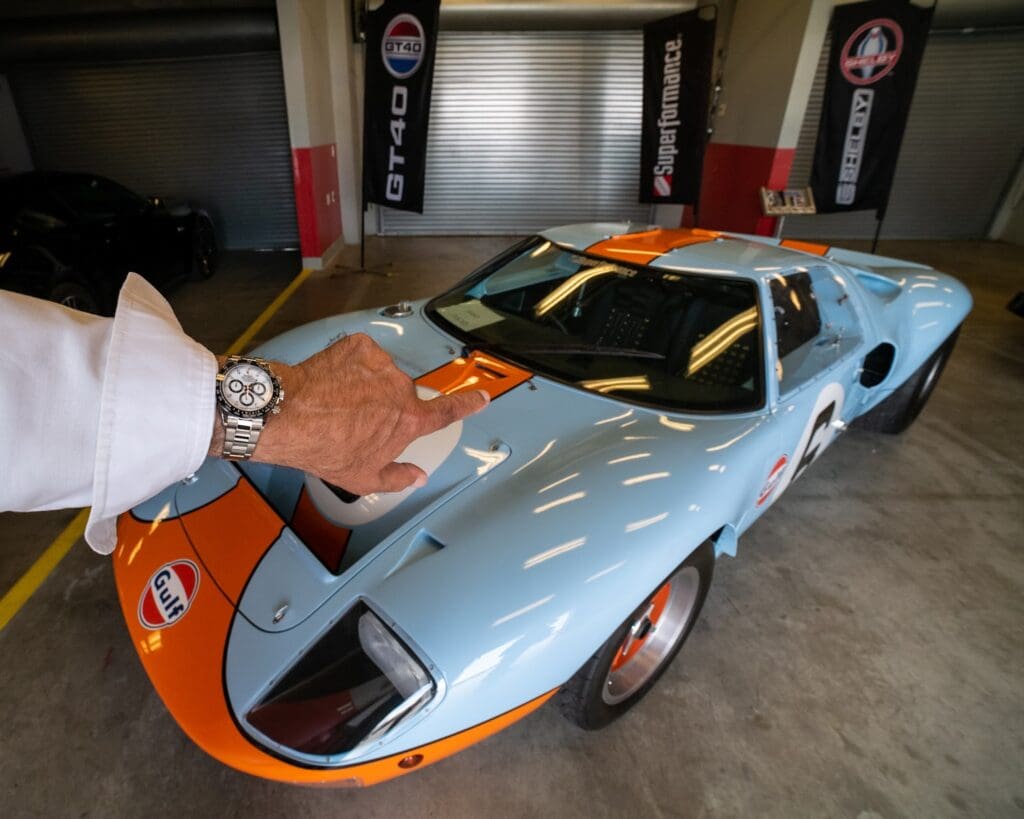
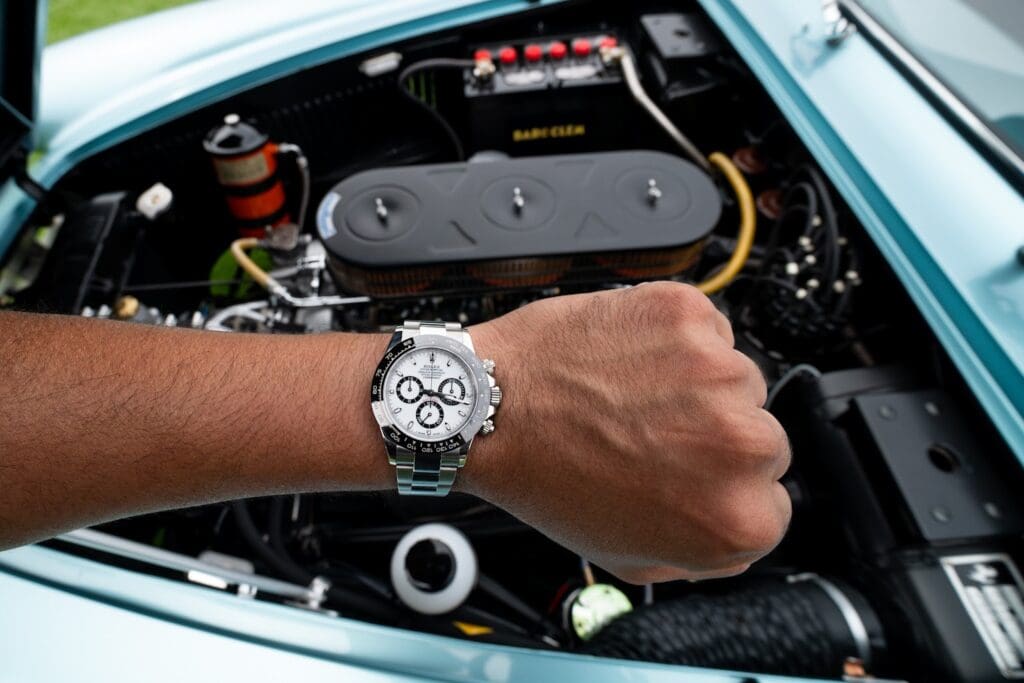
However, in its early days, the Daytona was not as popular as other chronograph models on the market, such as Heuer and Omega. It’s often recounted that the model would languish at authorized dealers. But this lackluster appreciation faded quickly in the 80s, and by the 1990s, the watch had attained the cult status it has today. One can point to three hypotheses for this success: 1) Rolex started using a mechanical movement from Zenith; 2) Italian collectors had started noticing the model; and 3) the legendary American actor (and serious car driver) Paul Newman had made the Daytona (that now is colloquially named after the actor) his watch of choice — after a present from his wife.
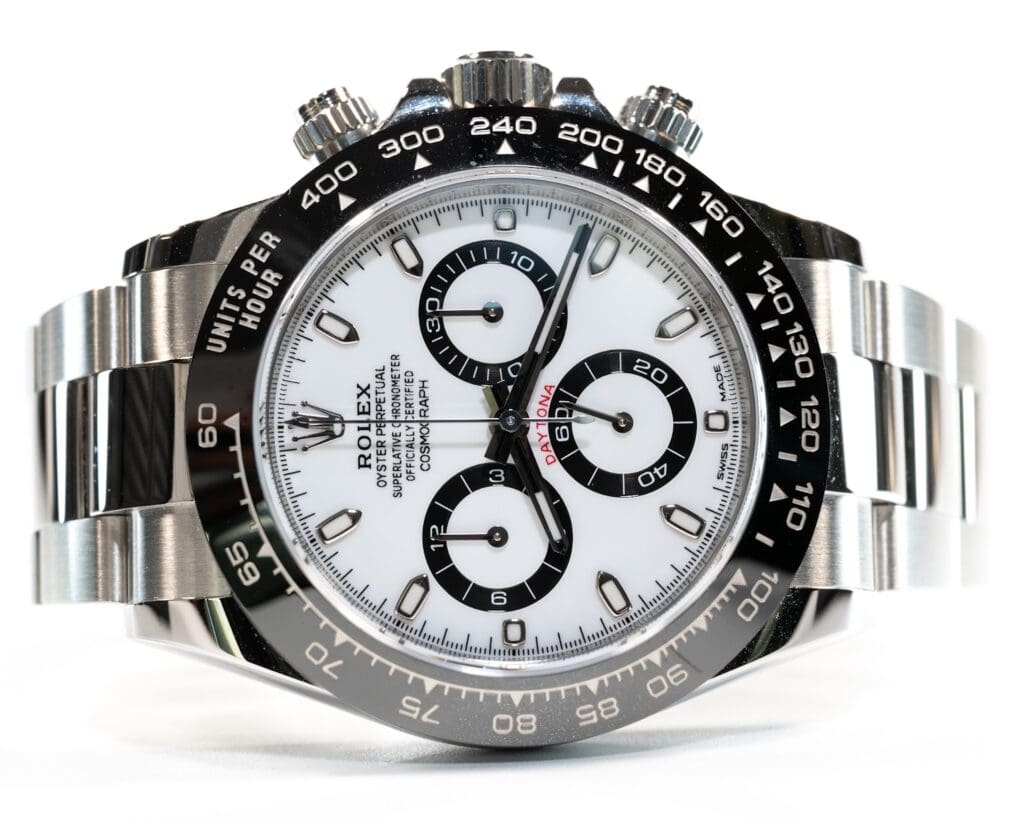
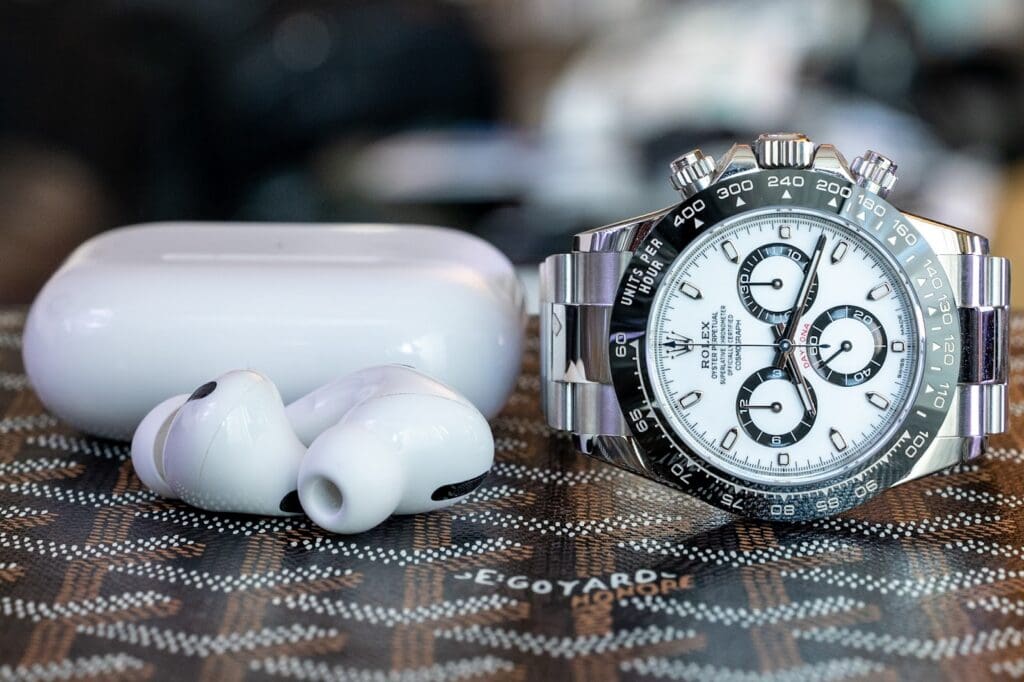
While not the first chronograph from Rolex, it’s the one with the most success, and it has remained in the catalog since its introduction. In 2000, Rolex released a new model with its own developed column-wheel chronograph movement. In 2015, an updated model with a ceramic bezel was released to much fanfare. The white dial model presented here is from that generation. The black dial model has always existed alongside the white dial, though always less popular, which is reflected in the moniker collectors use for it: “reverse panda”.
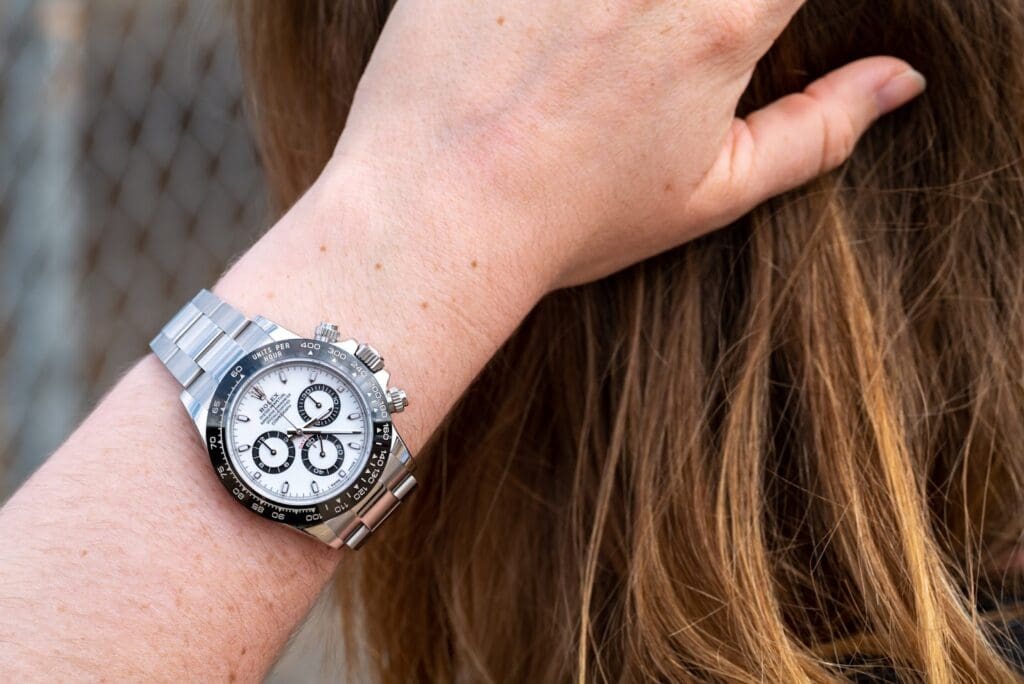
For the non-initiated, one of the most surprising characteristics of the Daytona is that it is 40 mm wide and slim at under 12.5 mm high and lug-to-lug of 46.5 mm. This results in a sports chronograph that is small and thin. Practically, it is a watch that is supremely easy for anyone of any wrist size to wear. Indeed you will see Daytonas on men, women, athletes, young, and old. It’s the most versatile watch I can wear. And it’s the watch I get the most compliments while wearing. Don’t be surprised to have people approach and ask if it is a Daytona…
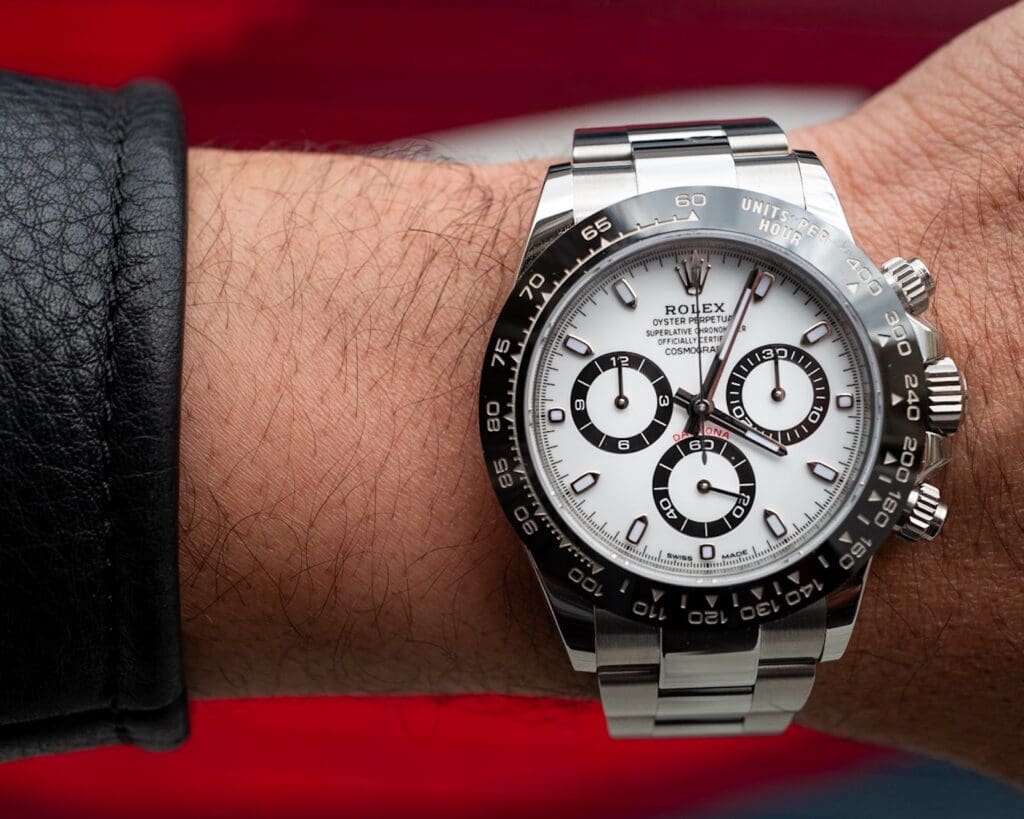
The distinctive dial layout is to blame for the attention it gets since it makes the watch easy to spot at a distance. The screwed-down pushers are part of the unique look but have a purpose since they give the watch more water resistance (200 meters) while making the watch appear larger. These pushers along with a lack of date can be points of contention, however, for me they are part of the Daytona signature. The case is complete with an excellent oyster bracelet that includes polished center links to make it pop. Like all modern oyster bracelets, there are no plays between links, and it tapers to give an easy yet snuggle fit. The EasyLink makes the bracelet adjustable (to 5 mm) during hot days.
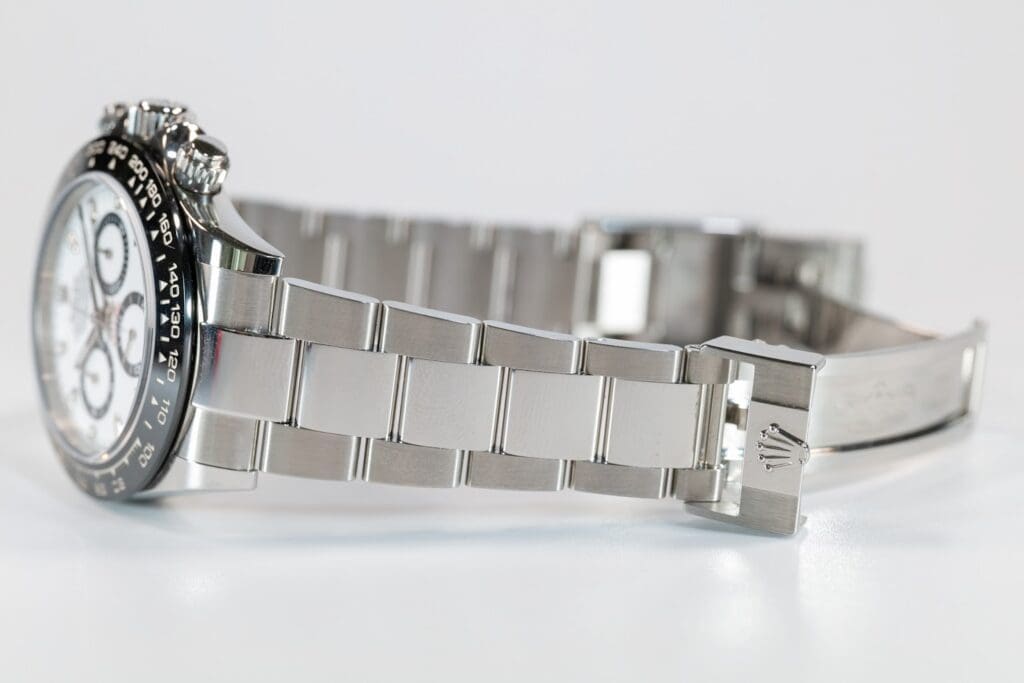
As a cult watch and the most popular watch in existence, it should not be surprising to see alternatives with similar design language. Indeed you can find blatant copycats to more subtle homages and inspired models. Two watches that remind me of the Daytona “panda” I want to mention are the Omega Speedmaster Tokyo 2020 and other white dial panda-like models and the Zenith Chronomaster Sport in white dial. Both will remind of the Daytona due to the black tachymeter bezel and white dials with the 3-6-9 subdial layout configurations. However, to be fair both watches have their own unique charms. The chronomaster for example has different colored subdials that overlap. And the Speedmaster is arguably as iconic as the Daytona with its own history and cult following.
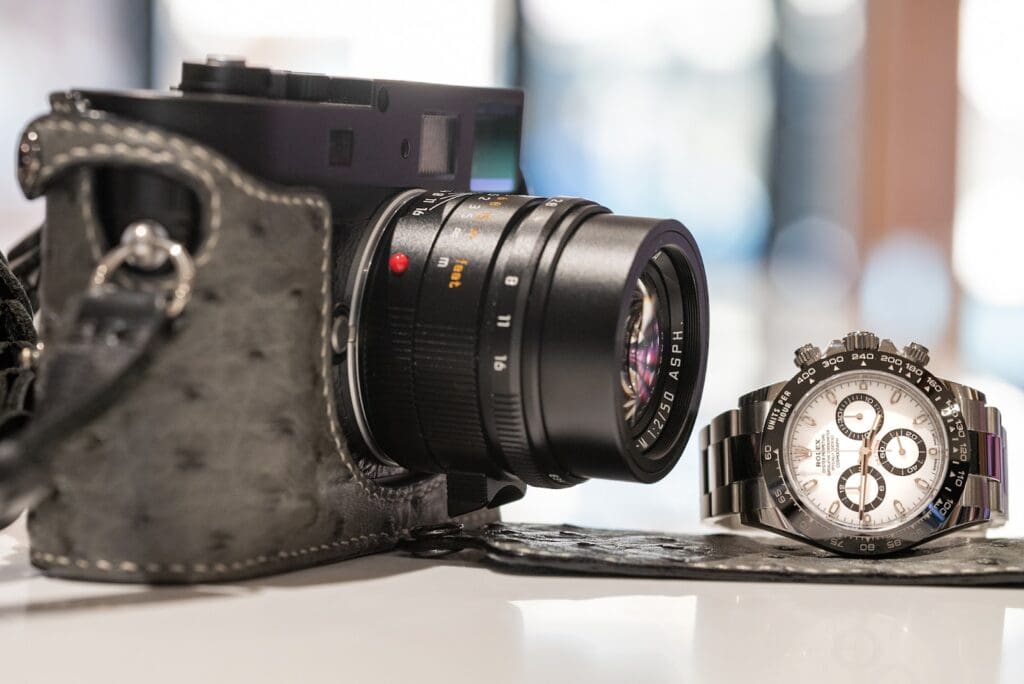
That said, there are really no other watches like the Rolex Daytona. As mentioned, it’s the definition of a cult watch and the most popular watch on the planet. Yet, in practice, from experience, it’s an awesome watch that is as good as the hype that surrounds it. Is there anything I dislike about the “panda” version of the Daytona?
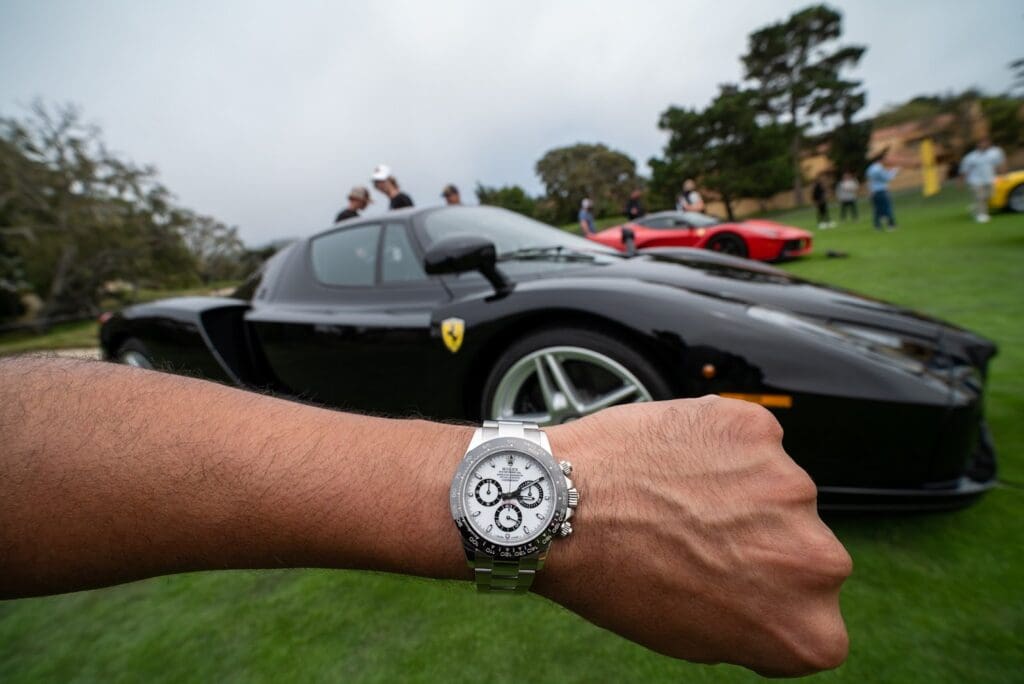
Well the only thing that comes to mind is the attention it gathers when I wear it. I was once stopped in my tracks at the grocery store by someone asking if this was a “panda” Daytona and how I was able to get one. And this was not the first nor last time. People will notice it. And if that does not bother you then ignore these words. For me it’s not an annoyance as much as I don’t need the attention. This is especially the case in cities that have experienced increased watch crime. This explains why when I wear my Daytona, I make sure I have long sleeves to cover up. Not bad advice anyhow and a small price to pay for the luck of being able to wear this awesome timepiece.

Gear Used
All photos are original and shot with Leica cameras and an assortment of Leica lenses and other macro lenses adapted to the L-mount. The wide angle shots like the first and last one as well as the one pointing to the Ford GTO were taken with Leica SL2-S and the Laowa 15mm Macro wide angle manual lens. The wrist shots and macro tabletop shots were taken with Leica SL2-S and Leica’s 60 mm TL macro lens.
Michael Maximilien



